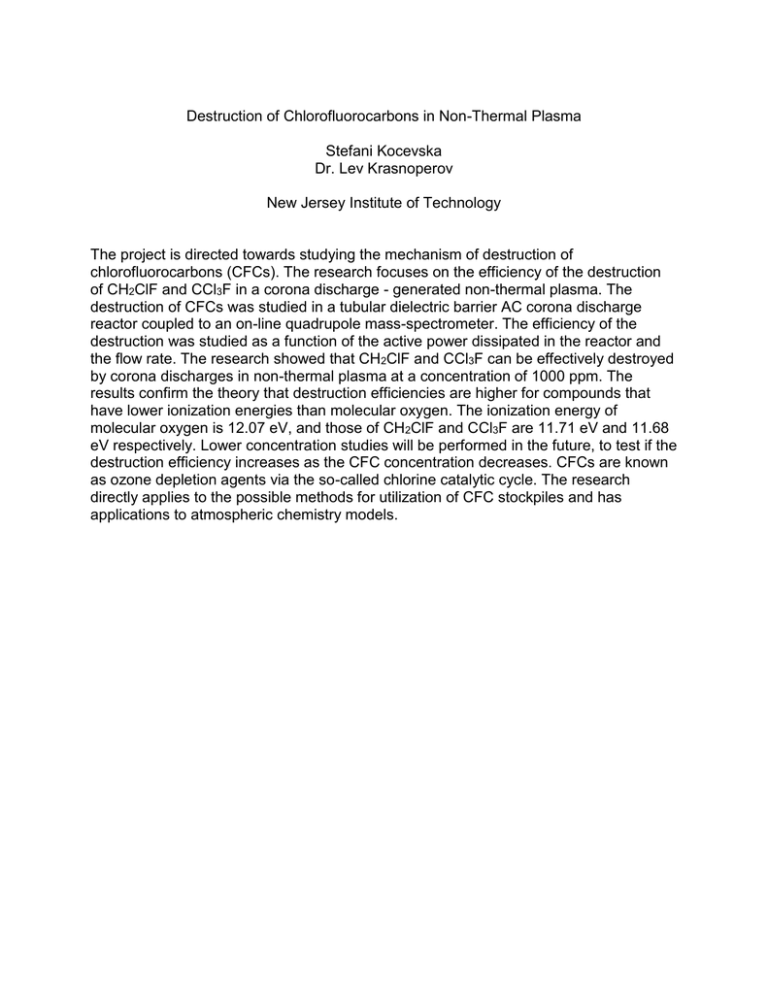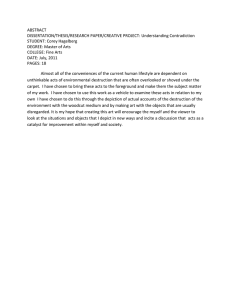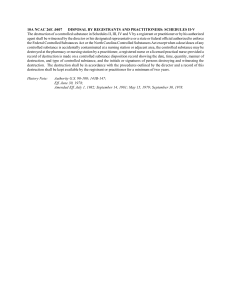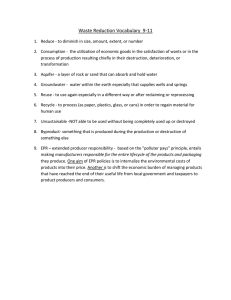Destruction of Chlorofluorocarbons in Non-Thermal Plasma Stefani Kocevska Dr. Lev Krasnoperov
advertisement

Destruction of Chlorofluorocarbons in Non-Thermal Plasma Stefani Kocevska Dr. Lev Krasnoperov New Jersey Institute of Technology The project is directed towards studying the mechanism of destruction of chlorofluorocarbons (CFCs). The research focuses on the efficiency of the destruction of CH2ClF and CCl3F in a corona discharge - generated non-thermal plasma. The destruction of CFCs was studied in a tubular dielectric barrier AC corona discharge reactor coupled to an on-line quadrupole mass-spectrometer. The efficiency of the destruction was studied as a function of the active power dissipated in the reactor and the flow rate. The research showed that CH2ClF and CCl3F can be effectively destroyed by corona discharges in non-thermal plasma at a concentration of 1000 ppm. The results confirm the theory that destruction efficiencies are higher for compounds that have lower ionization energies than molecular oxygen. The ionization energy of molecular oxygen is 12.07 eV, and those of CH2ClF and CCl3F are 11.71 eV and 11.68 eV respectively. Lower concentration studies will be performed in the future, to test if the destruction efficiency increases as the CFC concentration decreases. CFCs are known as ozone depletion agents via the so-called chlorine catalytic cycle. The research directly applies to the possible methods for utilization of CFC stockpiles and has applications to atmospheric chemistry models.





